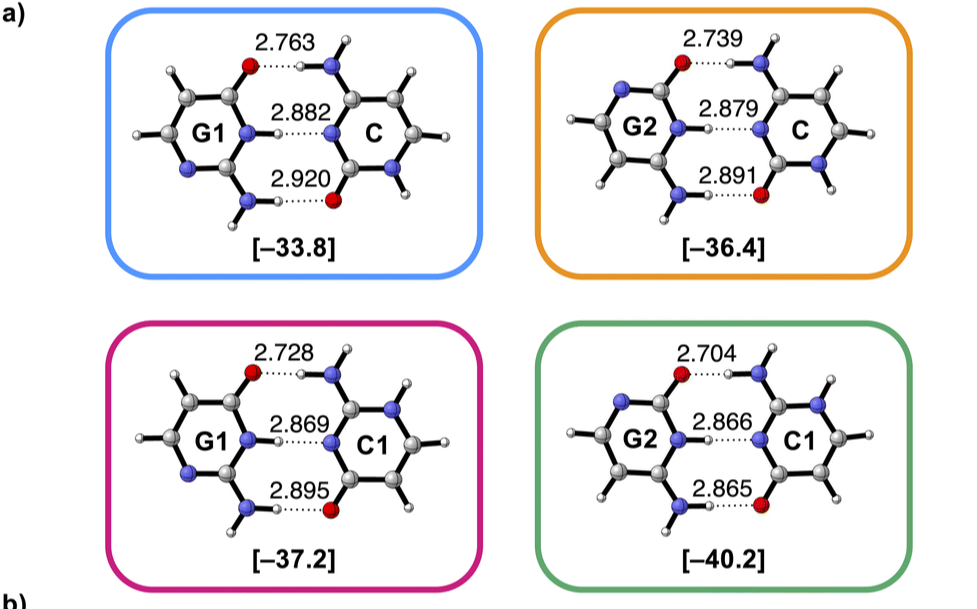News – Pagina 4
-
 English
EnglishChemical reaction performs complex calculations
Chemists in Nijmegen have developed a reservoir computing system that uses the formose reaction to perform complex calculations, Nature reports.
-
 English
EnglishFood fight
Harmful bacteria? Don’t be too quick to judge, because sometimes toxins can also be protective.
-
 English
EnglishStronger under pressure: new synthetic bond
Researchers in Wageningen have become the first to create catch bonds in the laboratory, which become stronger when force is applied to them.
-
 English
EnglishThe specs of PECs unravelled
A team of scientists from Twente was able to solve a hundred-year-old riddle concerning the formation of polyelectrolyte complexes (PECs) with NMR.
-
 English
EnglishAntimalarial drug decreases testosterone production in ovaries
Chinese researchers describe how an antimalarial drug inhibits the excess production of ‘male’ hormones, which is a hallmark symptom of PCOS.
-
 English
EnglishPolymer waste electrochemically recycled
Electrochemical recycling, made with AI Electrochemistry may be an underexplored option for recycling plastic waste, researchers show in a review in Chemical Science.
-
 English
EnglishCheap and sustainable cross-coupling photocatalyst
Graphitic carbon nitride is able to replace iridium as a photocatalyst in cross coupling reactions, greatly reducing cost and carbon footprint.
-
 English
EnglishFully recyclable silicone elastomers
Researchers from Ghent have developed a scalable method to make silicone elastomers fully recyclable.
-
 English
EnglishFrancqui Prize for Veronique Van Speybroeck
Veronique Van Speybroeck will be awarded the 2024 Francqui Prize for Exact Sciences for her pioneering computational work on catalysts.
-
 English
EnglishMetal-free MOF makes imines
Pyrene-based covalent organic frameworks and blue light can be used to make imines in an environmentally friendly way.
-
 English
EnglishProtein gear gives flagella two rotation directions
Bacteria swim with flagella, and a clever switching system allows them to aim at a target. New research shows how the flagellar drive changes direction.
-
 English
EnglishNew KNAW members 2024
The Royal Netherlands Academy of Arts and Sciences has added 17 new members, including three KNCV members.
-
 English
EnglishHydrogenation with transition metal mimics
Silicon, germanium and tin versions of carbenes make good hydrogen activators for hydrogenation reactions, quantum calculations show.
-
 English
EnglishFirst designer enzyme with boron chemistry
Researchers in Groningen have built a variant of boric acid into an enzyme, a first in the world of designer enzymes.
-
 English
EnglishRubicon Grant sends researchers abroad
Seventeen young researchers have recently been awarded a Rubicon Grant in the third and final round of 2023.
-
 English
EnglishRecognition for climate innovation
During the Antwerp Innovation Night, the AHA!-awards 2023 were presented to the most innovative researchers and companies in Antwerp.
-
 English
EnglishRetaining ultracold molecules in a quantum computer grid
If you put ultracold molecules into different quantum states, you can load optical tweezers more efficiently, bringing the quantum computer closer.
-
 English
EnglishHydrogen bonds influenced by the entire molecule
The strength of hydrogen bonds between two molecules is also influenced by the other atoms in the molecule.
-
 English
EnglishBuilding proteins the IKEA way
When you build a house or a bookshelf from a warehouse, you often use predefined components. You can do the same with proteins.
-
 English
EnglishGreen alanine with electroflow chemistry
With a combination of flow and electrochemistry, you can synthesise the amino acid alanine in a greener way than by fermentation.
